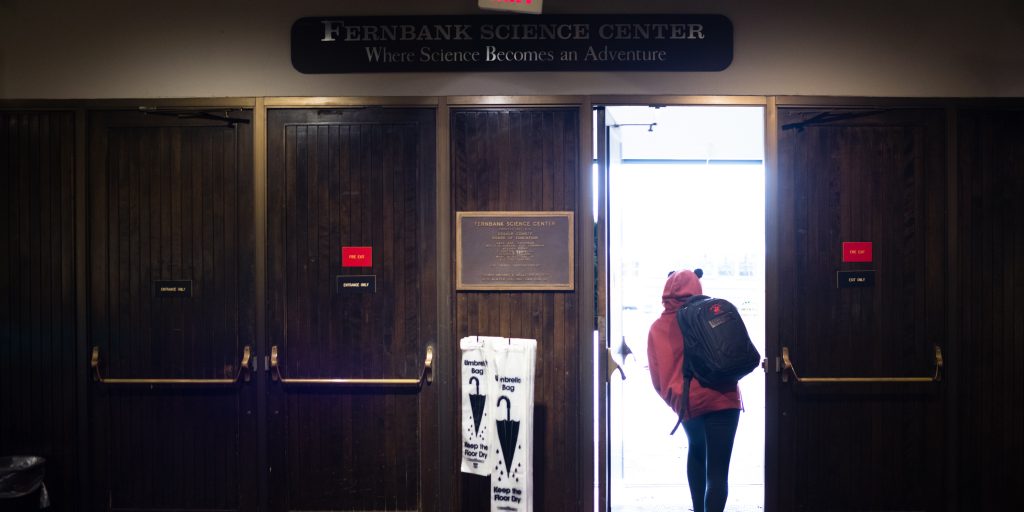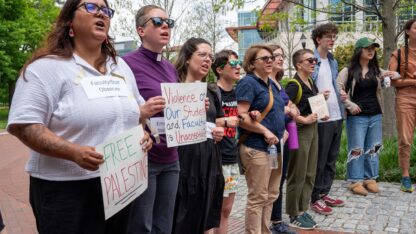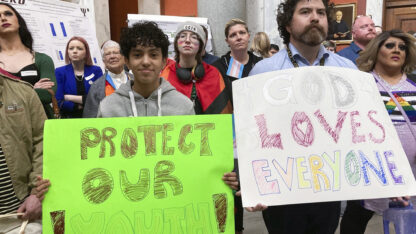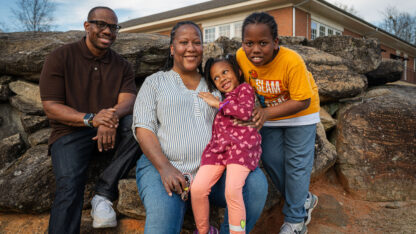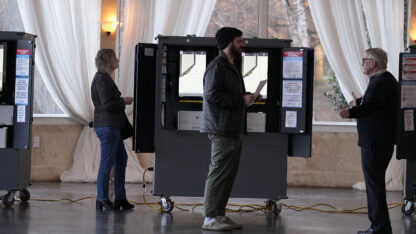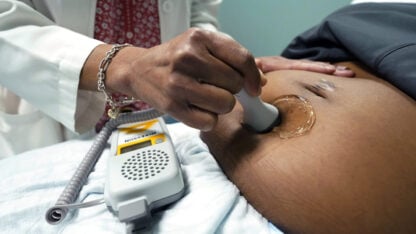Fernbank Science Center, An Atlanta Institution, Celebrates 50 Years
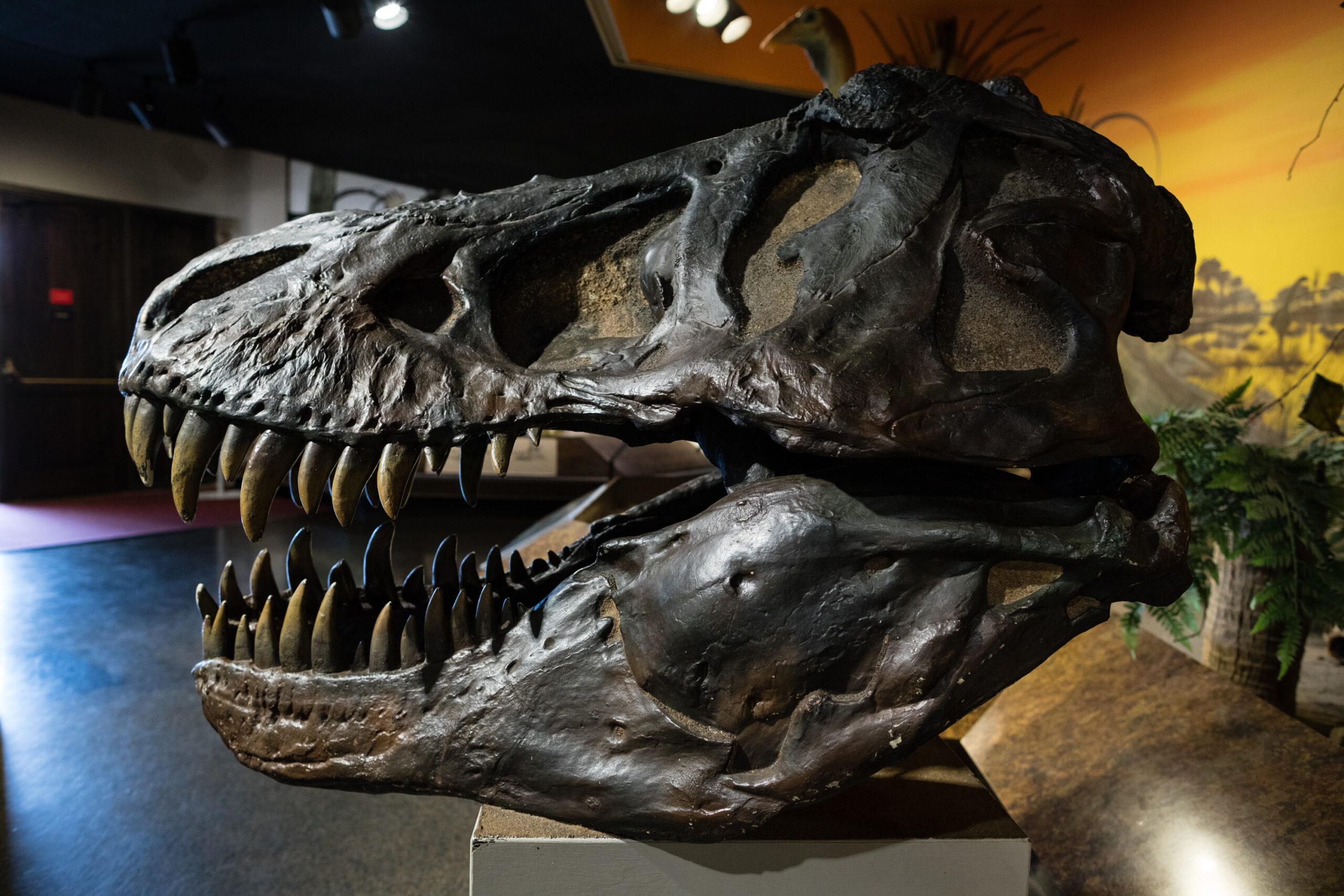
A t-rex skull greets Fernbank visitors at the entrance.
Dustin Chambers / WABE
An Atlanta institution celebrates its 50th anniversary this week. Tens of thousands of school students visit every year. For some, it’s changed the course of their lives and shaped their future careers. But Fernbank Science Center is still a bit of a hidden treasure.
There are a couple of “Fernbanks,” so to clear things up: This is not the big Fernbank Natural History Museum, with the glassy atrium and winding driveway. That one’s about a mile away. This is Fernbank Science Center, owned and operated by DeKalb County public schools, a squat 1960s building across the street from Fernbank Elementary.
Fernbank administrator Joyce Gamble said one way she explains the difference to people is, this one is “the first Fernbank.”
‘Push For Science’
It opened in 1967, the brainchild of then-Dekalb schools superintendent Jim Cherry. It was the era of the space race.
“It was largely because of the space program. That was the biggest push for science,” said Forrest Wilson, who has worked at Fernbank since before it opened.
Since then, generations of Atlanta students have come here to learn about all kinds of sciences: astronomy, geology, ecology.
Gamble, who’s worked at Fernbank for 30 years, was one of those students and she said she knew right away that she wanted to get a job here.
“It’s the sense of wonder that you get when you walk through those doors,” she said.
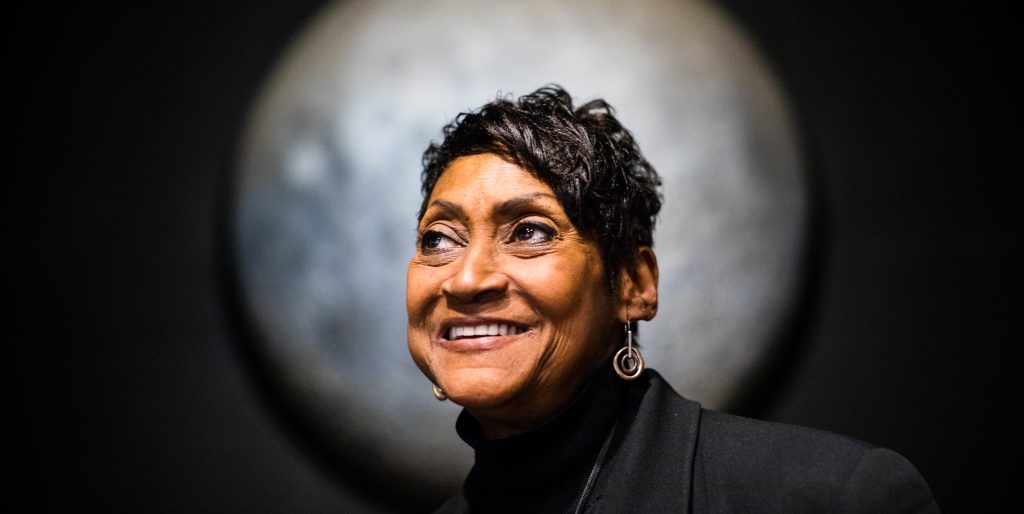
There’s the t-rex skull, that greets visitors right when they walk in.
“Every person that’s been through DeKalb County schools knows that t-rex,” Gamble said with a laugh.
There are actual meteorites, a moon rock and physics demonstrations. There are dioramas of natural scenes in Georgia, like the Okefenokee Swamp.
The Apollo 6 module is here, the real one from NASA’s space program. It has a connection to Atlanta, because of the date it took off: April 4, 1968, the same day Dr. Martin Luther King, Jr., was assassinated.
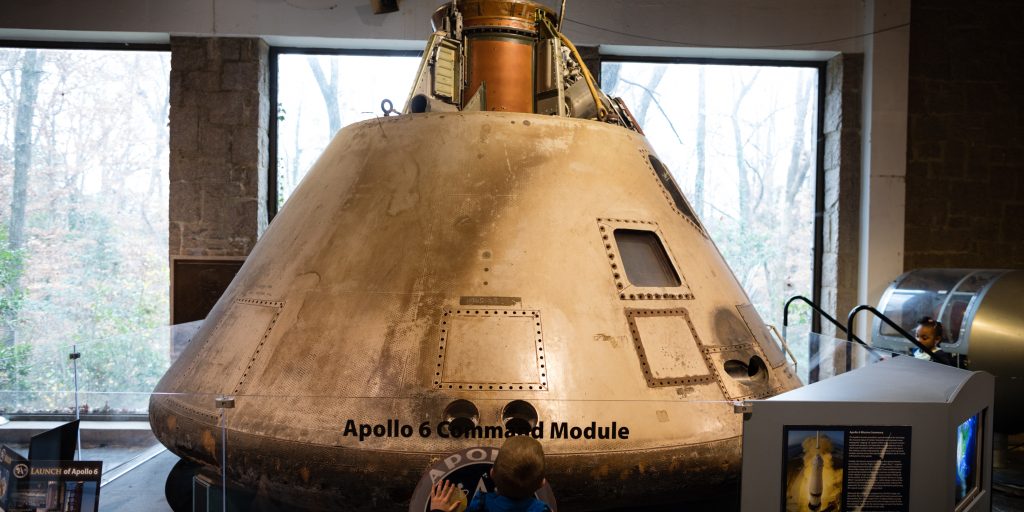
The planetarium is one of the largest in the region. It has new technology, but also still uses the original star projector. The machine is the size of a car and the shape of an ant, right in the middle of the cavernous room. Wilson said one reason he’s still working here after 50 years, is to maintain it.
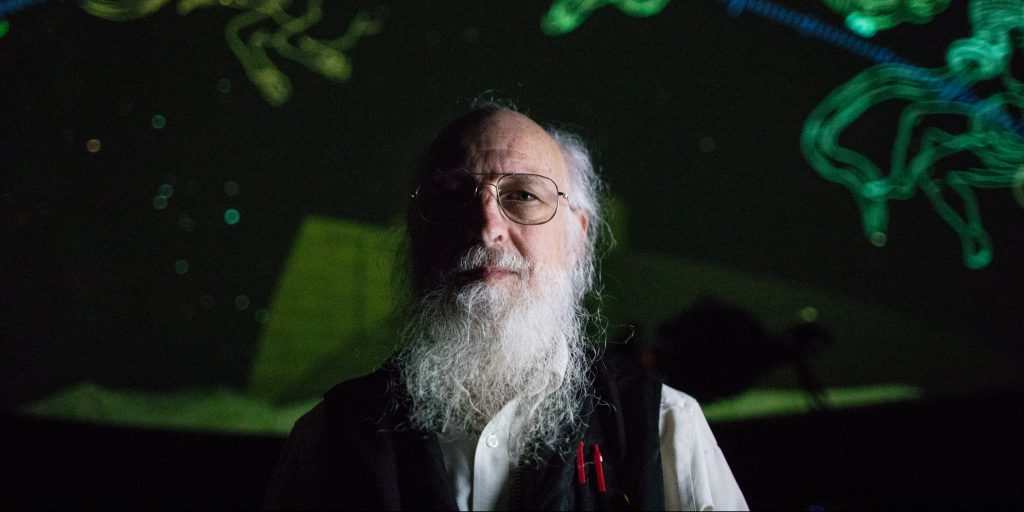
Another big draw is Fernbank’s telescope. It’s the biggest in the southeast, says astronomy instructor Mark Lancaster.
“We have always liked to promote it as the largest telescope in the world operated by a school system,” he said.
Lancaster is another person who first visited as a student, then eventually made his way back to the center for work.
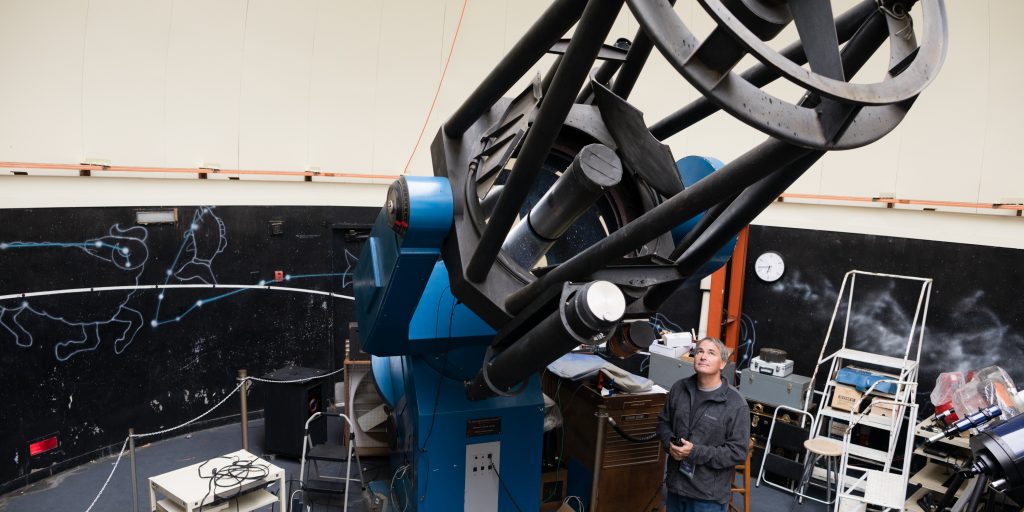
“I ran this thing when I was in high school, which was a lot of fun,” he said. “It’s kind of neat as a 16-year-old kid to stand here with a million dollar machine at the palm of your hands.”
Fernbank teaches a lot of hands-on science. Schools from all over metro Atlanta come here for visits. About 60,000 students came last year, according to the Science Center. DeKalb County students also take classes here. Gamble said students studying geology will spend time out at Stone Mountain. Ornithology? They’ll hold birds in their hands. Oceanography students take field trips to the coast.
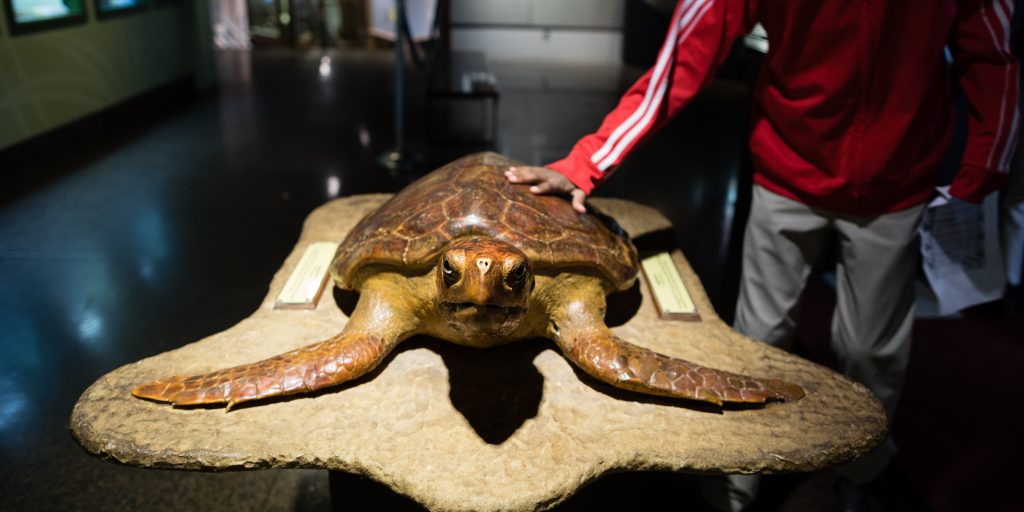
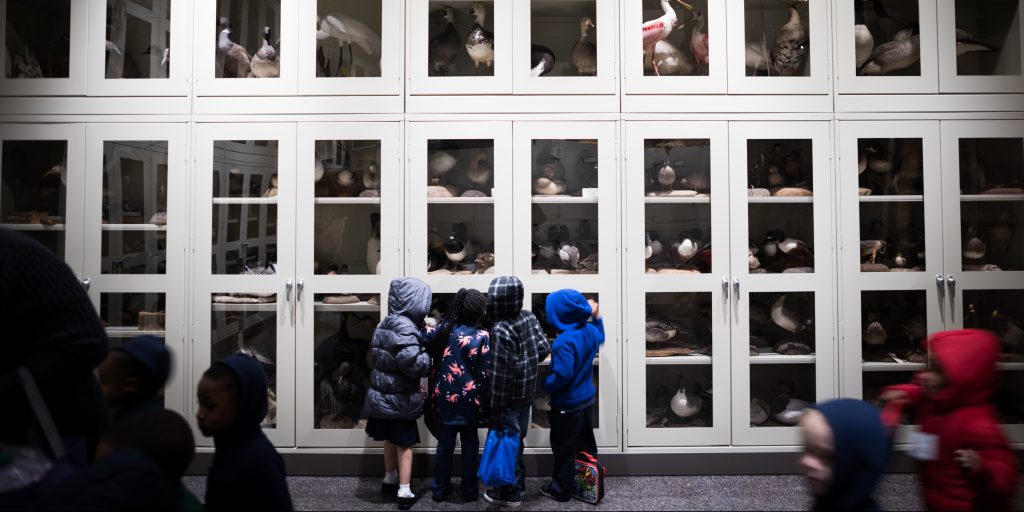
And in case any readers have an uncomfortable memory of another class? Yes, all DeKalb County 5th graders come here for sex ed.
“That’s one of the classes that I used to teach,” said Gamble. “And we don’t call it sex ed anymore, we call that human development.”
A lot of students stay attached to Fernbank. Eric Boe learned about physics and astronomy here, when he was in high school. Now he’s a NASA astronaut.
“Fernbank was what really nurtured the seed,” Boe said.
When Boe went up in the space shuttle, he carried a little Fernbank flag to recognize that this place helped him get there.
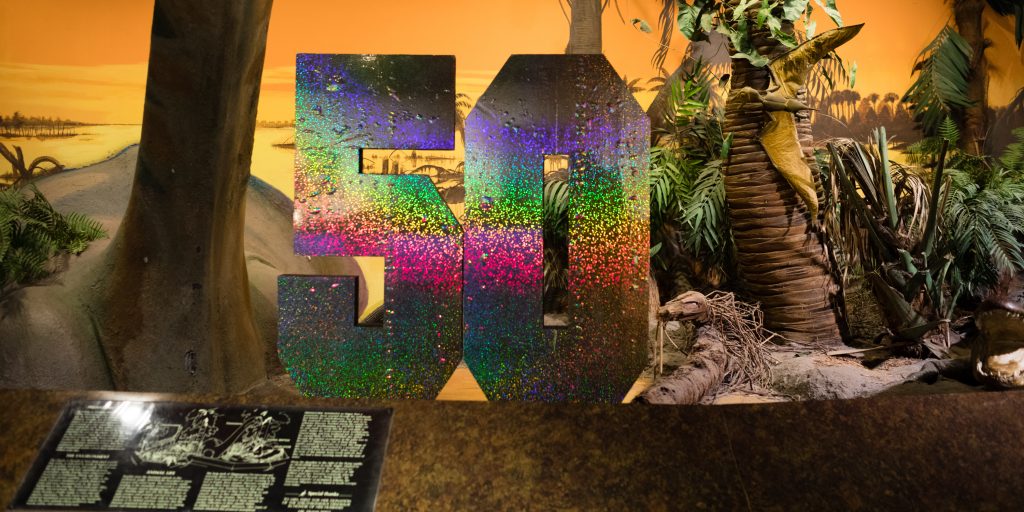
Most people don’t get to space, but plenty of people come back to the science center as adults, like Brianna Clausell, who visited on a Friday evening with her kids, and her sisters and their kids.
“We used to come as kids on field trips and stuff like that, and so we felt like, we wanted to bring our kids and have a little fun,” she said.
Mechanical engineer Doug Danielson says Fernbank encouraged him as a kid in the late-60s.
“Now you don’t have to be ashamed to be a geek, It’s cool. Back then, it wasn’t really. I was hanging out with a bunch of geeks here, and just having a great time,” he said.
Fernbank Science Center is celebrating its 50th anniversary with a gala this weekend. It’s planning a bigger party – open to kids – for next year.
